#european garden snail
Text



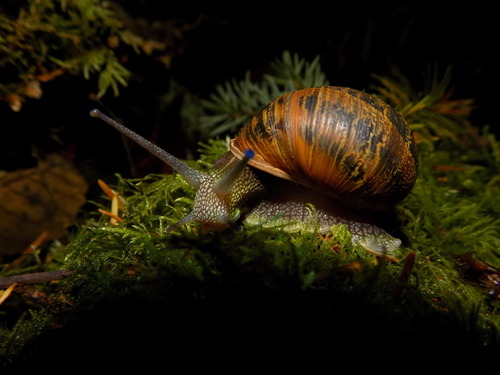
Life in the Slow Lane: The Brown Garden Snail
Perhaps the most widely known member of the mollusk group, the brown garden snail (Cornu aspersum), also known as the European garden snail, is native to the Mediterranean region of southern Europe and northern Africa, and his since spread to every continent except Antarctica. It thrives in temperate zones, particularly in open forests, coastal dunes, and urban parks and agricultural spaces. This spread has largely been facilitated by humans, and may have started as early as the Neolithic era nearly 8500 years ago.
The brown garden snail's name is an excellent descriptor of the species; both the body and the shell are mainly shades of brown. Generally the body is lighter than the shell, and secretes a thin layer of mucus to keep itself moist. The shell is about 2.5 to 4 cm (0.98-1.57 in) wide, while the body itself is roughly 5-9 cm (1.97-3.54 in) long. Body and shell combined, C. aspersum only weighs 15g (0.53 oz) at maximum. The body is made of two parts; the head, which carries the eye stalks, mouth, and sensory tentacles; and the foot, essentially a large muscle which the snail uses to move from place to place. The rest of its organs, including the heart, lungs, stomach, and anus are contained within the shell itself. Only the genital pore, located on the side of the foot, is exposed.
C. aspersum is primarily an herbivore, feeding on leaves, flowers, and fruits, as well as rotting plant and animal matter. In order to obtain the calcium it needs to build and maintain its shell, the European garden snail also occasionally consumes soil. Because of its slow nature, reaching a maximum of only 2.4 mm/s (0.09 in/s), this species is a common food item for other predatory snails, centipedes, glow worms, small mammals, lizards, frogs, and birds. However, the brown garden snail is able to retreat into its shell and produce a thick, frothy mucus membrane when threatened.
Like other terrestrial mollusks, the European garden snail is a hermaphroditic species, possessing both male and female gametes. Individuals may reproduce year round, provided with plentiful resources and good environmental conditions. When two snails encounter each other and wish to mate, each one spears the other with a hard calcite spine, known as a love dart. These darts allow the two to exchange sperm, and the process may take several hours. Afterwards, an individual may store viable sperm for up to 4 years. About ten days after a snail fertilizes its sperm, it lays about 50 eggs in a sheltered area; a single snail may do this up to 6 times a year. Eggs take between 2-4 weeks to hatch, and emerge with a soft shell. It takes about 10 months for juveniles to reach full maturity, and they may live up to 3 years in the wild.
Conservation status: C. aspersum has been rated as Least Concern by the IUCN. In both its introduced and native range, it is considered a pest species due to its consumption of crops. However, this species has also been adopted in some areas as a pet or as an edible delicacy.
If you like what I do, consider leaving a tip or buying me a ko-fi!
Photos
Bill Frank
Alan Henderson
Kostas Zontanos
Rand Workman via iNaturalist
#brown garden snail#european garden snail#Stylommatophora#Helicidae#land snails#snails#gastropods#mollusks#invertebrates#deciduous forests#deciduous forest invertebrates#grasslands#grassland invertebrates#urban fauna#urban invertebrates#europe#southern europe#africa#north africa#animal facts#biology#zoology
112 notes
·
View notes
Video
Follow the Leader.. by Will Atkins
Via Flickr:
Young banded snails (Cepea nemoralis) trek across the moss in my garden on a wet autumn day.
#snail#snails#banded snail#banded snails#Cepea#Cepea nemoralis#gastropod#Gastropoda#Mollusc#molluscs#Mollusca#mollusk#mollusks#Garden Wildlife#Wildlife#Wildlife of Europe#European Wildlife#Animal#Nature#European Snails#European Molluscs#British Wildlife#British Snails#British Molluscs#Garden Snails#UK wildlife#uk snails#Hertfordshire wildlife#Hemel Hempstead wildlife#close up
7 notes
·
View notes
Text
Animals I am keeping right now: ball python, Kenyan sand boa, boa imperator, orange baboon tarantula, Asian forest scorpion, desert hairy scorpion, striped bark scorpion, grove snail, European garden snail, A. Phaiodactylus (not sure if they have a common name), blue death feigning beetles, dairy cow isopods, little sea isopods, peach isopods, hissing cockroaches, Texas desert millipede, daisys blue rice fish.... I guess I will count springtails.... I think that is it...
22 notes
·
View notes
Note
i am mildly sorry for sending you a very large paragraph of house md spider headcanons mostly because i was supposed to be asleep but instead i stayed up until 2:30am sending you house md spider headcanons
:( forgive me
at least i didn't send you house md wasps and bees headcanons? mostly because i'm only really familiar with european honeybees, yellowjackets, carpenter bees, tarantula hawk wasps, red velvet ants, whatever the fuck type of wasps that aren't yellowjackets and aren't tarantula hawks and live in my area, and bumble bees, and the actual interaction (as in me having sustained skin-skin contact with these critters) is limited to yellowjackets and honeybees. but still.
...amber is a red velvet ant
i love gisele forensic entomologist yes girl get those bugs
do house and wilson let her have pet bugs (ie indoor beehive (my DREAM), tarantula, jumping spider, letting whatever's living in the bathroom stay there (my current situation)) or no. i think they should let her. good deterrent for irritating people who don't like bugs.
-🎸
AMBER IS AN ANCTJFGSKLDG
they have a shower spider that she named herald, and of course once they can't kill it after that. wilson isn't super into it (he's not SCARED of spiders but he gets the heebie jeebies) but even he starts getting sympathetic to this spider after a while. it fell into the water once when he was having a shower and after the initial "oh fuck a spider" passed he took the time to very carefully rescue herald from getting washed down the drain.
giselle's first pet is snails. just a good ol' garden snail. unlikely to escape, doesn't bite/sting, and is house and wilson's litmus test for how responsible their daughter can be. she's still pretty young, not even ten, so they both were ready for her to grow bored and the snail be their responsibility, but that doesn't happen. the only time either of them have to help is when she's away (sleepover at a friend's, camp, whatever) or if she wants to give her snail a treat that needs to be cut up -- she's old enough for a pet snail. not old enough to have a knife.
she actually sneaks in another snail later on once her parents don't feel the need to check in as often, in turn accidentally breeding them and having. many, many baby snails in her terrarium that Will Not go unnoticed. oops
#asks#anon#riff#house mgv#the only bugs that bother me are parasitic kinds and maggots#i uh. have trauma with that :(#anyway the idea of them finding out she's hiding 52 baby snails in her terrarium and ->#that night in bed wilson's complaining to house that they're gonna be 'the snail people' to their neighbors#“i don't want to be 'the snail guy' house!!!”#“did you know snails are hermaphrodites capable of making and fertilizing eggs. i'm basically already a snail guy”#and wilson just gives him this Stare from between his fingers (was holding his head in hands)
6 notes
·
View notes
Text

Today's coolest find at the Nature ID Field Day I led for Portland Community College at Lacamas Lake Park was this Pacific sideband snail (Monadenia fidelis), which is native to the Pacific coastal region from southern Alaska to northern California. They're easily mistaken for the invasive European brown garden snail (Cornu aspersum), but the sideband's shell is narrower and a bit flatter, and it's a deeper red-brown with pink on the edge of the foot. We also saw a beautiful male belted kingfisher (Megaceryle alcyon), explored the differences between similar species of plants like lady fern (Athyrium felix-femina) vs spreading wood fern (Dryopteris expansa) and European holly (Ilex aquifolium) versus Oregon grape (Mahonia aquifolium), and found the sljme mold Fuligo septica on a log.
I'll miss doing in person classes over winter, but the weather's just too unpredictable, so we'll just have to look forward to spring!
#snail#snails#molluscs#gastropods#invertebrates#wildlife#animals#PNW#forest#Pacific Northwest#Pacific sideband#naturalist#natural history
51 notes
·
View notes
Text












BIBLE - 'WAKE - UP - THE - MIGHTY - MEN
OF - GOD' - INVISIBLE - GOD - OF - ISRAEL
ALEXANDER DUMAS - '3 MUSKATEERS'
AUTHOR - 'ALL - FOR - ONE - AND - ONE
FOR - ALL' - 'CRUELTY - 2 - ANIMALS' - US
FELONY - 50 STATES
YOUR - GARDEN - 'OUTDOORS' - WALLS
LAW - STATES - AS - LONG - AS - YOUR
DOGS - ARE - THERE
NOT - EASY - 2 - TOPPLE - DOG - FOOD
AND - WATER - FILLED - UP - AT - ALL
TIMES - THEY'RE - OUTSIDE - ALSO
ANTS - LOVE - DOG - OR - CAT FOOD
'MONETORY - FINE' - OTHERWISE
MIAMI - POLICE
N CHAPMAN PARTNERSHIP
METROMOVER - LAST STOP
N MIAMI AVE
'DON'T - FEED - THE - ANIMALS'
THEY - MEAN
'THEY - MEAN - DON'T - FEED - CATS'
'DON'T - FEED - DOVES'
WORLD - WAR 2
WW 1
EUROPEANS - AFRICANS - ATE - CATS
DOVES - EVENTUALLY - WITH - FUEL
AND - AUTOMOBILES - ATE - AFTER
SHOOTING - HORSES - ONE - BULLET
FOREHEADS - ATE - HORSES - THEN
ATE - CATS
EUROPE - AND - ASIA - TODAY
EATS - DOGS - MAN's - BEST - FRIEND
CATS - FROGS - WORMS - SNAILS
NOT - ALL - CITIES
'YOU - ARE - WHAT - U - EAT'
SHELTERS - MEAN
'DON'T - FEED - CATS
MILLIONS - IN - TOTAL - RECEIVED
CAT - FOOD - NOT - EXPENSIVE
EVEN - IN - PUBLIX - SUPERMARKET
NON-PROFIT - ORGANIZATION
RELIGIOUS - SPANISH - ENGLISH
SPOKEN - HISPANICS - WHITES &
BLKS - MEAN - AMERICANS - AND
NOT - MEAN
'THEY - WISH' - PLEASE - PRINT
'EAT - CATS - DON'T - FEED - THEM'
'KNIFE - THEIR - THROATS' - MORE
FOOD - 4 - THE - HOMELESS - THEY
HOUSE - IF - OBEDIENT
MOUNTAINS - GRANDMA - EATS
POSSOMS - FR - UNDER - HOUSES
GRANDMA - CROAKED
'SLING SHOT - DOVES' - DISNEY+
'BEAUTY - AND - THE - BEST'
HOW - MEN - WHERE - ANYWHERE
3 SHOTS - RIFFLES
3 DUCKS - FELL -FR - SKY
'LUNCH' - FOR - GARZON - FRENCH
DUDE - WITH - SERVANT
CHAPMAN - PARTNERSHIP
CAMILLUS HOUSE
MANY - PARKS
THEY - WISH - THESE - SIGNS
'SLING SHOT - DOVES - NOT - WW II
CARRIER - PIGEONS - EAT - THEM
AFTER' - MORE - FOOD - EA MEAL
'KNIFE - CATS - IN - THE - NECK'
BURGERS - KITTY - BURGERS - IN
SUPPORTED - BY - MIAMI - POLICE
CAMILLUS HOUSE
5A - FOR - 100 - SAME - PEOPLE 2
EAT - 7:45A - MAYBE - BREAKFAST
CAT - SAUSAGES
LAST - CENTURY - USA - 50 STATES
AT - LEAST - WHO - COUNTS - CATS
OUR - HEAVENLY - FATHER - DOES
GIRLS - OF - SOUTH - KOREA
WHO - FEEDS BIRDS - KOREAN GIRLS
OUR - GOD - DOES
'MARY - POPPINS'
OR - 'FAT - BIRDS'
BIBLE - VERSES - INSTEAD - PATENTED
ADD - 'BEING - KINDHEARTED - 2 - ONE
ANOTHER - INCLUDES - ANIMALS - YES
DOMESTIC - ESPECIALLY
RAINBOW - 4 - ANIMALS - ALSO - NOT
JUST - 4 - HUMANS
WHO - COUNTS - BIRDS - GOD - DOES
'LOVE - IS - ALWAYS - GENTLE - AND
KIND' - FROM - MEMORY - LEAVING 2
EAT - THEN - 3P - 12 MIN WALK - FRM
MAIN LIBRARY
'BLESSED - COMING - IN - BLESSED
GOING - OUT' - CATS - HAVE RIGHTS
ALSO - WHO - DON'T - BARK - WHO
DON'T - ALWAYS - 'MEOW' - ALSO
'BLESSED - COMING - IN - BLESSED
GOING - OUT' - DEUTERONOMY 28





JAPANESE - ANIMATION
'KIKI's - DELIVERY - SERVICE'
YOUTUBE - BORN - IN - USA
JULIA MA - HALLOWEEN WAS
KIKI - MOST - BEAUTIFUL AGE
13 - WITCH - TRAINING - REQ'D
AND - 2 - LEAVE - HOME - FOR
AT LEAST - 1 YEAR - SO - KIKI's
TRAVEL - JESUS - IS - LORD KR
1 note
·
View note
Text


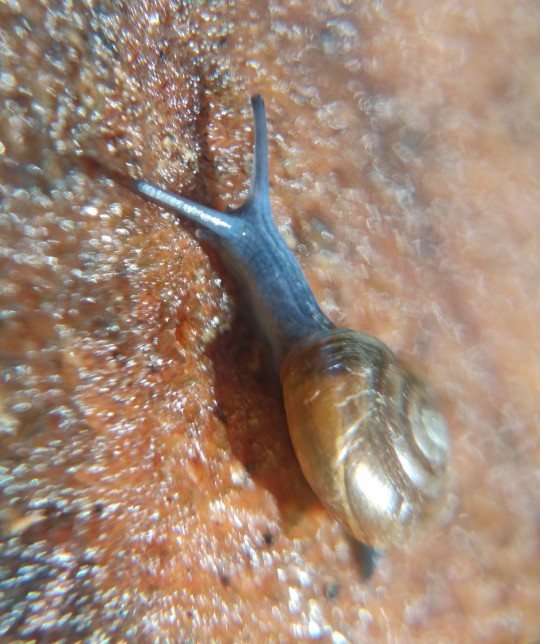



Oxychilus draparnaudi, or Draparnaud's glass snail, is a species of small land snail, a terrestrial pulmonate gastropod mollusc.
Class:Gastropoda
Subclass:Heterobranchia
Order:Stylommatophora
Family:Oxychilidae
Genus:Oxychilus
Oxychilus draparnaudi is large for a zonitid glass snail, also called the dark-bodied glass snail with a shell of about 14 mm in maximum dimension. The shell is glossy and is a translucent yellowish-brown and gold in color, somewhat whiter underneath. The visible soft parts of the animal are a very unusual strong dark blue, mixed with grey.
This animal is omnivorous, and preys upon native land snails.
Native to western Europe and the Mediterranean. Introduced to Russia, North America, South and North Africa, Asia, Australia and New Zealand. The species occurs in humid deciduous forest habitats, but in most parts of its European range it occurs synanthropically in parks, urban gardens, compost heaps, urban waste grounds and also in greenhouses. Во дворе, на земле под доской.
47/22 Northcross Drive, Oteha, Auckland 0632
7PJC+J4X Auckland
-36.7183750, 174.7203580
наземные моллюски беспозвоночные улитки брюхоногие
0 notes
Text
Hey everyone,
Okay I know that some of you are really struggling and have your problems but I just wanted to post this and advertise a good cause I am involved in.
As I let slide in the past a couple of times, I rehabilitate hedgehogs, the European brown chested hedgehog which is naturally part of Europe’s wildlife and facing more and more issues under climate change.
Increased temperatures during winter reduce hibernation which causes immunesystem weaknesses, increased rain is causing increased cases of skin fungus in combination with mites and overall there is less and less to eat for these insectivores through pesticides (we’ve already lost over a third of our insects in Germany). Hedgehogs in desperation for food start eating slugs and snails (which are despite common belief not part of the natural diet) which carry masses of parasites infecting the hogs and causing diarrhea and worsening of the overall health, and slowly starving and weakening them unless treated.
Extreme weather events like flooding and fires are completely decimating their habitat.
Adding to all these climate change impacts humans are also further endangering this already endangered species by putting lawn mowing robots into their yards and having those run non stop severely injuring hedgehogs.
I am a member of a non profit where we rehabilitate hedgehogs. We are completely dependent on donations.
If you could give anything to this cause we are able to save more lives. If you are interested in hedgehog rehabilitation please ask. I’m happy to share more about these wonderful animals.
I know this is German but we appreciate your help:
If you cannot help in form of donations, we would still appreciate you reblogging this to spread the word.
See below my personal patients (from top left to bottom right) Ruby born 2022 was in care for fungi infection. Alfie in care for giardia he also was in my care 2 years ago from having his side cut open from a gardening tool or lawn mower. In the middle you see Flea born 2020 (first 1-2 months old and then 2 years old). And lastly stumpy who came to me with a severely infected stumpy arm where a toe was missing.





#hedgehogs#hogs#wildlife#wildlife rehabilitation#European wildlife#wildlife sanctuary#donations#saving lives#Germany#German
0 notes
Note
whats your favorite animal and favorite dinosaur (or non dinosaur if your fave is a dinosaur)
My favourite dinosaur is probably the magpie but i presume you meant non-avian dinosaurs, which makes the answer more difficult, but I do like dromaeosaurs in general though I don't think I can pick just one genus; besides those, t rex is just really cool, but again, i really can't pick a genus to be my fave. If i had surviving non-avian dinosaurs in an area I live in this would be easier because I'd just pick some that i see a bunch.
As to animals in general, a single answer is also difficult but some options in no particular order include: red fox, house cat, european wildcat, sandcat, orca, european bison, magpie, jackdaw, azhdarchid pterosaurs in general (if i have to pick one, mmmm, lets say hatzegopteryx), saltwater crocodile, anura in general (if i have to pick one, lets go with the european toad, simply because its the one that i most frequently see, giving me the opportunity to go "woahj frog"), lungfish, coelacanth, bluefin tuna, northern pike, bumblebees in general, seven-spotted ladybugs, horseshoe crab, tardigrades in general, loricifera in general, common garden snail, great pond snail, siphonophores in general, and my girlfriend
1 note
·
View note
Photo




The Smooth Newt with the Smooth Moves
Also known as the European newt, northern smooth newt, or common newt (Lissotriton vulgaris), the smooth newt is one of the most common species in Europe and western Asia. It is also the only newt species found in Ireland. There are currently three recognised subspecies distributed throughout this range, and four others have been reclassified as distinct species. The common newt is able to survive in a variety of habitats, including deciduous and coniferous forests, wetlands, meadows, parks, and gardens. Their only requirements are sufficient sunlight and water with sufficient vegetation.
Like most newts, the northern smooth newt spends the majority of its time foraging for food on land. Their diet is carnivorous, consisting of insects, worms, snails, slugs, and larvae. When available, L. vulgaris may also eat the eggs of its own species. In turn, many animals prey on the European newt, including waterbirds, snakes, frogs, and larger newts. To avoid these predators the smooth newt is active mainly at night, and will secrete a toxic mucus when threatened. While active, they are largely solitary but from October to March several individuals will hibernate together under logs or leaf litter burrows.
Almost as soon as the common newt emerges from hibernation, they begin migration to their breeding sites-- usually the ponds in which they spawned. Males undergo a dramatic transformation, growing large crests and becoming brightly colored. When a female enters the water, the male swims around her and sniffs her cloaca. He then vibrates his tail to fan his pheromones towards her. Finally, he will swim away and, if the female is interested, she will follow him. He then deposits a packet of sperm, or spermatophore, that the female picks up for fertilization. Rival males may try to lead the female towards their own spermatophores, and clutches of eggs often have multiple fathers.
Females deposit anywhere from 100 to 500 eggs, each of which is carefully wrapped in aquatic vegetation. Larvae hatch after only 20 days, and quickly begin developing. Unlike frogs and toads, newt larvae have external, feathery gills, and develop their front legs first. After about three months, the larvae absorb their gills and leave the water as newtlets or efts. However, when temperatures are particularly low and aquatic prey is abundant, some adults retain their gills and stay aquatic in a phenomenon known as paedomorphism. These adults are fully capable of sexual reproduction, and when moved to areas with a larger population will often metamorphose into terrestrial adults.
Adult smooth newts are rather small, reaching only 9–11 cm (3.5–4.3 in) and 0.3–5.2 g (0.011–0.183 oz). Males are slightly larger than females. The head and back are dark brown or olive, while the underside is much lighter. Both males and females have dark spots on their bellies, and males also sport a bright orange stripe. In the spring, the colors in males become more vivid and the spots grow larger. Males also develop a large yellow crest that runs from the head to the table, and is dotted with dark bands.
Conservation status: The IUCN has designated the European newt as Least Concern, as it is common over most of its range. Threats include habitat destruction and the introduction of invasive fish species.
If you like what I do, consider leaving a tip or buying me a ko-fi!
Photos
Philip Precey
Derek Middleton
Christoph Moning via iNaturalist
Kristýna Coufalová via iNaturalist
#common newt#smooth newt#Urodela#Salamandridae#newts#salamanders#amphibians#deciduous forests#deciduous forest amphibians#evergreen forests#evergreen forest amphibians#grassland birds#grassland amphibians#wetlands#wetland amphibians#urban fauna#urban amphibians#europe#asia#west asia#animal facts#biology#zoology
148 notes
·
View notes
Text
How to Help Hedgehogs During All Four Seasons
Hedgehogs are adorable and fascinating creatures that can be found in many parts of the world. Unfortunately, hedgehogs are in decline due to habitat loss, road accidents, and other human activities. As animal lovers, it is our responsibility to help hedgehogs and ensure that they are protected. In this blog post, we will discuss how to help hedgehogs during all four seasons. If you like to also read other facts about animal welfare, check out our blog Malis Planet.
Did you know?
Hedgehogs are small mammals that can be found in parts of Europe, Asia, and Africa, and have been introduced to other parts of the world like New Zealand[1]. Here are some statistics on hedgehogs:
There are 17 species of hedgehogs in five genera[1].
The head and body of adult hedgehogs range from 5 to 12 inches (13 to 30 centimetres) long and weigh between 14 to 39 ounces[2][3].
The common Western European hedgehog (Erinaceus europaeus) can grow up to 1,100 grams[4].
Hedgehogs are carnivores and eat insects, snails, and other small animals[2][3].
In the UK, hedgehogs have declined by 30% in urban areas and 50% in rural areas since 2000[5].
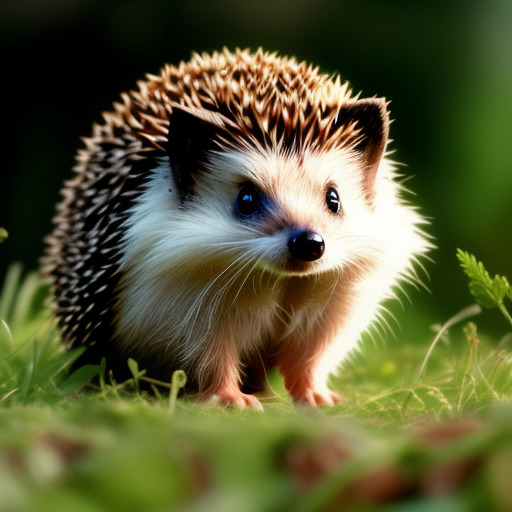
Spring
Spring is the time when hedgehogs come out of hibernation. During this time, they are hungry and need to find food. Here's how you can help hedgehogs in the spring:
Provide food: Leave out a dish of water and some cat or dog food for hedgehogs to eat. Avoid giving them milk or bread, as this can upset their stomachs.
Create a safe space: Hedgehogs need a safe place to rest during the day. You can create a safe space by building a hedgehog house or providing a pile of leaves for them to hide in.
Summer
Summer is the breeding season for hedgehogs. During this time, they are looking for a mate and may travel long distances to find one. Here's how you can help hedgehogs in the summer:
Provide water: Leave out a dish of water for the hedgehogs to drink from. Make sure to change the water regularly to keep it fresh.
Avoid using pesticides: Pesticides can be harmful to hedgehogs and other wildlife. Avoid using them in your garden or on your lawn.
Fall
Fall is the time when hedgehogs are preparing for hibernation. During this time, they need to build up their fat reserves. Here's how you can help hedgehogs in the fall:
Provide food: Leave out a dish of water and some cat or dog food for hedgehogs to eat. They need to build up their fat reserves for hibernation.
Create a safe space: Hedgehogs need a safe place to hibernate during the winter. You can create a safe space by building a hedgehog house or providing a pile of leaves for them to hide in.
Winter
Winter is the time when hedgehogs are in hibernation. During this time, they need a safe and warm place to rest. Here's how you can help hedgehogs in the winter:
Provide a safe space: Hedgehogs need a safe place to hibernate during the winter. You can create a safe space by building a hedgehog house or providing a pile of leaves for them to hide in.
Avoid disturbing them: If you come across a hedgehog during hibernation, avoid disturbing them. They need to conserve their energy during this time.

Conclusion
Hedgehogs are fascinating creatures that need our help and protection. By providing food, water, and a safe space for hedgehogs, we can ensure that they are protected during all four seasons. Whether it's building a hedgehog house or leaving out a dish of water, there are many ways to help hedgehogs and make a difference in their lives. Involve your children in this process.
Check out our latest blogs at Malis Planet - just click here.
1 note
·
View note
Text
VARIOUS BIRDS PART 1
There is a wide variety of bird species you can find in the trees and by the water around UEA. These are all part of the same ecosystem by each owning their own niche, increasing the biodiversity of the campus and making a more lively, and loud, environment. In this post I’ve included an odd selection of birds I’ve captured photos of throughout the year. Below is a western jackdaw (Coloeus monedula) in a tree, maybe eyeing up a predator or competitor:

Jackdaws are part of the family Corvidae, and are in the genus closest to that of crows, Corvus. This is obvious by their similarity in appearance. However, western jackdaws are easy to distinguish physically from crows by their slate-grey head tops and light blue eyes (although the immature birds will still have dark plumage and dark eyes). Western jackdaws are known to be highly adaptable and can vary their diet significantly depending on the available food sources, eating anything from small invertebrates such as beetles, flys, butterflies, snails and spiders, small rodents, bats, eggs, roadkill, vegetable items such as grains, seeds, elderberries, acorns, and cultivated fruits. A study conducted in Spain in 1993 found that the Western jackdaws there ate siliceous and calcareous grit to aid in the digestion of vegetable foods as well as supply them with dietary calcium.
Another bird surveying the treetops is this Eurasian blue tit (Cyanistes caeruleus):

This abundant British bird species is extremely easy to identify due to its blue and yellow plumage. They usually feed on several species of insects, although they also like to eat the young buds of trees and seeds. They are mainly known as feeding on coccids (also known as scale insects) and aphids (small sap-sucking insects), two types of insect that can be detrimental to plants. In this way, blue tits play an important role in maintaining the biodiversity of plants in their environments. The also enjoy eating butterflies and moths, such as the wood tiger moth, and can sometimes be seen chasing them through the sky. Another songbird easily recognisable by both its call and its colour is the European robin (Erithacus rubecula). Here is one too-eager-to-be-photographed robin:

Immediately obvious is why the original name in Britain for this birds was ‘redbreast’. In the 15th century, when it became popular for some reason to give human names to bird species it became known as the ‘robin redbreast’, which over time became shortened to plain old ‘robin’. It’s also obvious by this photo that they are remarkably unafraid of people in Britain, and are actually drawn to human activities such as gardening in search of earthworms and other insects. However, in parts of continental Europe, where robins were historically hunted and killed they are much more wary. During the autumn and winter months, when the ground becomes too hard to search for earthworms and insects they will instead feed on berries and fruit. A much bigger bird I spotted perched in a tree over the lake this past year is the great cormorant (Phalacrocorax carbo):

Due to the fact they like to perch on branches near the tops of trees, over bodies of water in order to look for fish to dive down and catch, I wasn’t sure what bird this was when I took the photo. Even zooming in, the quality was too poor (and my bird knowledge not sophisticated enough) for me to positively identify the species. I knew it was in the Phalacrocoracidae family, and narrowed it down to either a shag (Gulosus aristotelis) or a great cormorant, but couldn’t decide. I used this guide below to help, and tried the Seek app, but couldn’t get a positive answer, but now was more sure it was a great cormorant:

My next try, before ashamedly asking my birding friends for help, was to consult an online forum that is dedicated to helping movies identify birds: https://www.reddit.com/r/whatsthisbird/
I posted my photo, gave the time and place if the sighting, and within 10 minutes had a unanimous answer of great cormorant from several strangers who, when I checked their profiles, were serious birders. I found it really inspiring that a community of strangers could help each other in this way, pooling their knowledge and passion into aiding those that didn’t know as much.
This great cormorant was just sitting and waiting for its time to dive down and strike. Cormorants, as well as shags, eat almost nothing else but fish and aquatic creatures such as shrimp, crustaceans and mollusks. They can combine several techniques to catch their prey, such as swallowing smaller prey whole along shallow waters, or diving up to 80m (a feat recorded of the imperial cormorant) to catch food from the sea floor. Due to their large appetites and varied fishing techniques, a large flock of cormorants have been known to deplete a waterway of fish in hours.
0 notes
Text
The Garden House Intro
So hello.
While we already did an extended intro for the system on main (aka The Dragon Head), our subsystem recently revealed itself as of writing this, and we sort of think it would be nice/neat to have faceclaim/picrew intro post as well. For us.
The Garden House is a subsystem of the Glass Dragon Collective located behind Chrellys’s Haunted Castle in the Underworld part of the innerworld. So we’re in a little greenhouse/shed thing in MONARCH’s garden we call “the Garden House.”
Which is the name of the subsystem.
Anyway, we’re all various animals, with more of less animal-like forms. Typically we have a fully animal form and then a more humanoid-esque form (it helps us feel a little more comfortable in the body). For this post, we’ll just include our main forms, with the possibility of both in our specific intro posts if they exist. Image descriptions will be given for accessibility purposes.
The Garden House
Pickett (He/Him)
Pickett is a porcupine and MONARCH’s assistant in helping keep the subsystem in order. Considered the primary guardian and a bit of a bridge to the rest of the system. He has a highly protective role and usually is in the background, with a hard time directly fronting. However we know he is always looking out for us, and we find him greatly comforting. Longtime partners with Maury.

[Image description: Closeup picture of a porcupine nestled in the crook of a tree, fur warm and taking on brownish hues in the sun. End ID]
Maury (He/Him)
Maury is a wombat and Pickett’s longtime partner (the nature of their exact relationship being somewhat ambiguous). Maury doesn’t really like fronting that much, he’s a simple guy who enjoys his simple life in the Garden House, but he’ll enjoy a good cup of coffee when he does and we love him for it.
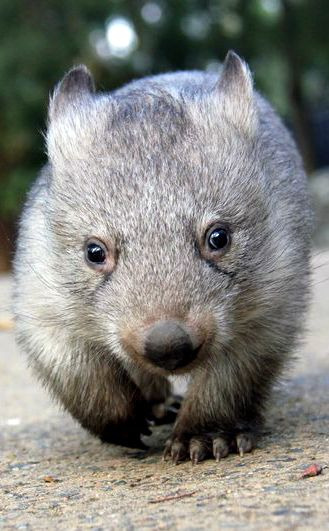
[Image description: Closeup picture of a wombat caught midwalk on pavement, soft grey fur just in reach. End ID]
Jack (He/Him)
Jack is possum and the self-proclaimed “king of trash” ruling over the harsher part of the subsystem that isn’t exactly sunshine and daises. He loves a good bit of mischief and runs with a “devil-may-care/did-i-ask” attitude, but is nonetheless super caring and really good at helping other people do what they need up front, particularly with his boyfriend, Onion. Didn’t have many opportunities before system discovery, but really enjoys fronting and hopes to make a life now that he has the chance.
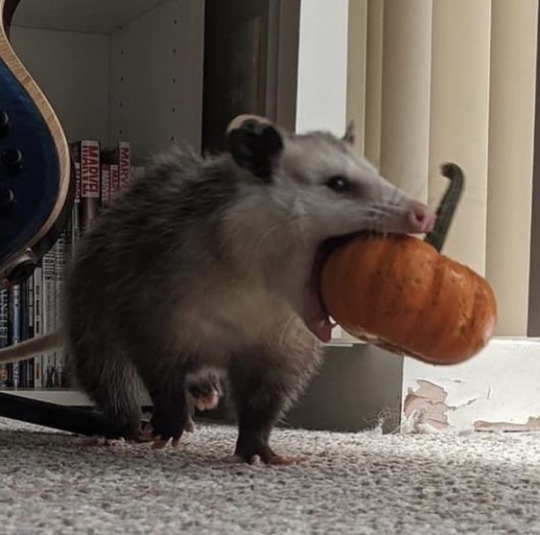
[Image description: Picture of a possum running through a carpeted house with a miniature pumpkin in his jaws. End ID]
Onion (He/They)
Onion is a small white mouse who loves nothing more than snuggling up with his boyfriend, Jack, to watch a bit of horror and/or anime while enjoying a spot of cream cheese. Onion is small and has some of the most obvious perception shifts while fronting (everything feels much bigger) but nevertheless loves the idea of adventure and exploring the world.

[Image description: Picture of a white mouse standing up on their hind paws as they hold up a tiny teddy bear. End ID]
Mushroom (She/He/They)
Mushroom is Onion’s goth sister. She’s channels a really intense energy when she fronts due to time spent in the Smallest Kingdom, another subsystem of ours. Is sapphic.

[Image description: Picture of white mouse chilling with her eyes closed as she sits in a tiny mouse sized porcelain tub. End ID]
Luce (She/They)
Luce is a grey mouse who enjoys having nice things and meeting people in and out of system. She’s a bubble of energy and sunlight and loves crickets and all things Crickett (they are girlfriends, happy pride). Her favorite colors are deep purple and emerald green.

[Image description: Stock photo of a grey and white mouse staring endearingly up at the camera. End ID]
Crickett (Any basic ones)
Crickett is an agender praying mantis who loves spending time chilling with her girlfriend, Luce. He’s a very lowkey emo but also loves some solid pops of color like the fresh green with pops of orange red associated with praying mantises. Like Luce, she has a more humanoid form, although her favorite activity to do in the body is probably sleeping.

[Image description: A stock photo of a praying mantis perched atop a large leaf looking into the camera. End ID]
Ghastley (He/They)
Ghastley is a european water vole somewhere in his fifties who guards over a wheat field in our subsystem known as “Staverwarsh.” His accent is distinct because he talks completely out of the left side of our mouth. He loves sunflowers and talking to nature spirits down by the river.
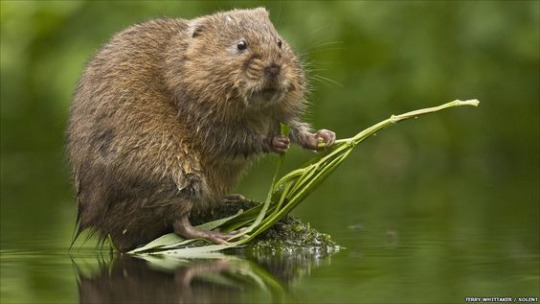
[Image Description: Picture of a european water vole perched atop a mossy rock just sticking out of shallow water, with a twig from some kind of evergreen in his paws, going up under him to almost giving the illusion of a leaf boat, the bottom part of his fur is just damp. End ID]
Maurnie (She/Her)
Maurnie is a raccoon who loves burgundy red and little red riding hood. She lives in a trashcan innerworld and loves spending time playing cards and lounging about with Onion and Jack. We don’t know much more since she can’t really front without panicking, but we’re working on making things more comfortable if she decides she wants to and we love her all the same!
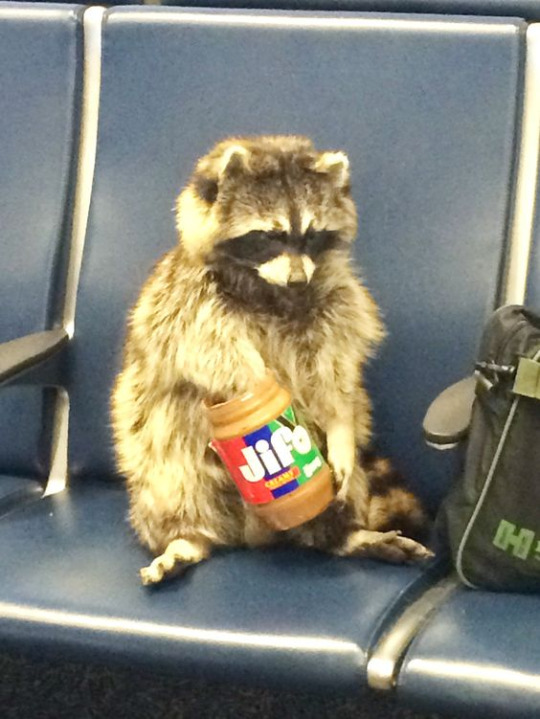
[Image description: Picture of a raccoon sitting upright in public transit, paws in a jar of Jif peanut butter. End ID]
Morris Morrisey (He/They)
Morris is a slug and distinguished older gentleman of the Garden House community, probably identifying around 50/60 human age, long settled with his long-time partner, Norton, after meeting in college (we have no idea where they went to college). Prefers to see taking the front as akin to an amusement park ride and enjoys the experience of seeing the world from the perspective of a human and slug alike.
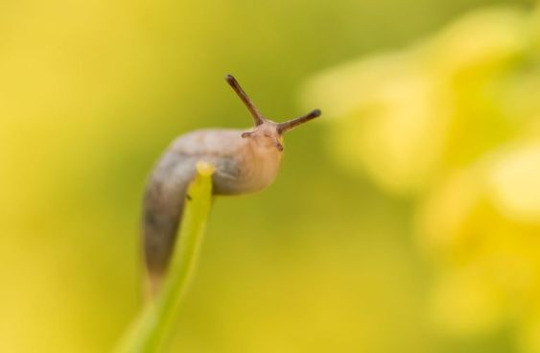
[Image Description: Picture of a brown slug perched atop a single blade of grass, looking towards the camera. End ID]
Norton (He/Him)
Norton is a snail and a similarly distinguished elder in the Garden House community to his partner, Morris, although known for always being energetic and ready for an adventure. He can often give our younger members a run for their money, though is still willing to dispense wisdom. Is a very welcoming person and did not hesitate to offer Milk food and shelter when he first wandered dazed into their home by accident.

[Image description: Picture of a snail with a small yellow flower placed atop their head. End ID]
Milk (He/Him/!!/!!!/??/???/[-]/[()])
Milk is Norton and Morris’s adopted ant son and one of the younger members of the Garden House. Milk was adopted after [-] was separated from [()] colony while being chased by some animals unique to our innerworld and ended up accidentally wandering into the Garden House. Milk describes himself as “a panic ant” due to [()] tendency to panic and general fear of the world. We’re doing our best to make !!! feel welcome and safe with us though.

[Image Description: Picture of an ant, antennae raised alongside with his front legs atop the edge of a white mushroom. End ID]
Avril (He/Him/Bzz/Bzzt/or other bee related neos)
Avril is a bee from the Garden House. Technically, he’s on the younger side of our system alongside Hunter and Prince (not syskid just younger than the body), but gets called “grandpa” and “old man” due to certain aspects of bzzt’s disposition (by Morris and Norton anyway), does a fair amount of jobs for them as bzz does maintenance in the Garden House.

[Image Description: Closeup picture of a very fuzzy bee atop a single blade of grass with several legs off, almost waving. End ID]
Kgder (He/Her?)
Kgder is a young alligator known for her mismashed british/icelandic accent. He is generally thought to be small, though it is unclear what her exact age is. Relates to lizards/reptiles generally. Likes Florida related alligator memes. Will always take guesses to how her name is pronounced.

[Image Description: Picture of a caiman on a log with a bunch of colorful butterflies on their head and snout. End ID]
Fred Crowe (He/They)
Fred Crowe is Idan’s messenger raven, carrying Idan’s messages throughout different parts of the system. He has the second worst posture after Agony (probably a raven thing) and has a general emo aesthetic. His favorite activity is hanging out on people’s arms, shoulders, backs, particularly for his best friend Chris.

[Image description: Stock photo of a raven perched on a dead branch. End ID]
Chris (He/Her exactly as stated)
Chris is a deer centaur, emphasis on centaur. Possibly was a regular deer at some point, but because the Garden House interacts a lot in other parts of the system sometimes forms evolve, so Chris is solidly a centaur from her time in the Everwood. Fred is her good mate and favorite idiot, and her favorite color is azure blue.
Picture is just a regular deer to not break emersion, Chris does have the upper-half of a human though.
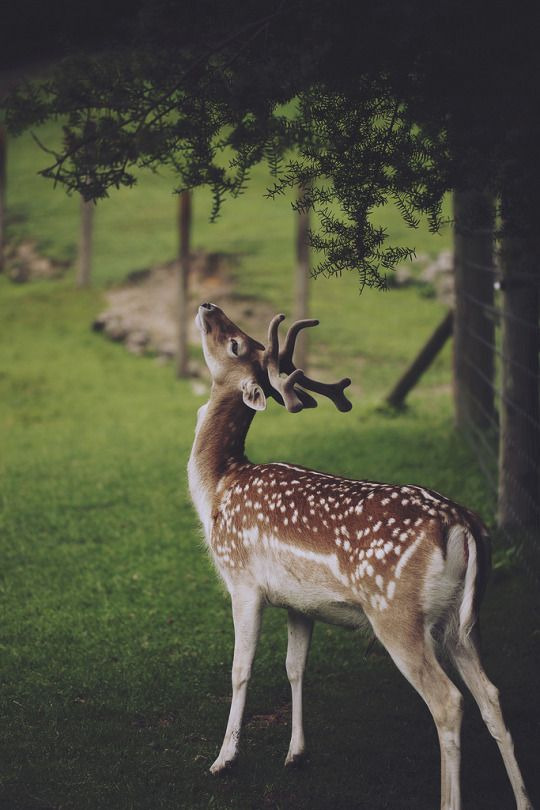
[Image Description: Picture of deer with a white speckled coat and antlers, their head reared back as they look up at the branches of an evergreen. End ID]
Thanks for reading, feel welcome to say hi or ask questions (as long as you’re nice we love talking about ourselves :)
- the Garden House signing off!
#intro post#the garden house subsystem#the garden house#faceclaims#mice#racoon#possum#porcupine#wombat#praying mantis#slug#snail#insects#raven#animals#food#ant#bee#european water vole#vole#alligator
4 notes
·
View notes
Text
Salamander’s Rule
So this is mainly inspired by Hamster’s Paradise made by Tribbetherium who (I may add) is a much better artist then me. So the gist of this is that this is a project I’m working on that I am very well aware may be like the countless other Spec evos that stay in the dark but I hope it provides amusement and some knowledge.
So the world revolving around this is a seed world populated by the Hellbender Salamander an Asian Giant Salamander that resides in America. But there are other vertebrates such as Marsh Rice Rats a rather amphibious rodent even more so then most in their clade, and Dwarf Corydoras.
Invertebrates: Black Garden Ant, European Mantis, Leopard Slug, Garden Snail, Common Tarantula, Tarantula Wasp, Marsh beetle, Sea Sponge, Painted Butterfly, Horseshoe Crab, Velvet worm,and Tadpole shrimp
11 notes
·
View notes
Text

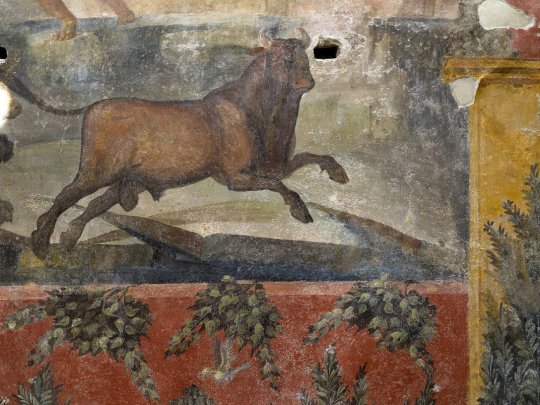


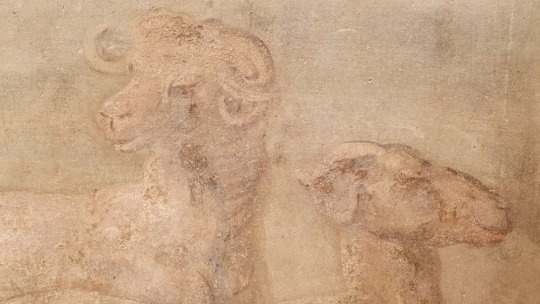

Newly Restored Pompeiian Frescoes Capture Hunting Scenes in Vivid Detail
Researchers used a laser to clean the ancient artworks before retouching their faded sections
March 1, 2021
Jacob MuñozReporter
The walls of Pompeii’s House of the Ceii are adorned with scenes of animals locked in battle, from a big cat on the verge of taking down a pair of rams to a deer looking back in terror as a wild boar gives chase. Nearby, African hunters standing in the shadow of Egyptian-style buildings prepare to hunt hippopotamuses and crocodiles on the banks of Nile.
More than 2,000 years after their creation, these stunning frescoes have finally been restored to their original glory. As the Archaeological Park of Pompeii, an autonomous Italian cultural body established to preserve and promote public usage of the razed Roman city, announced this week, experts used a laser to clean the paintings before carefully retouching their faded details. The “highly complex operation” also took steps to protect the artworks from rainwater and other potential threats, according to a statement.

Likely owned by magistrate Lucius Ceius Secundus, the House of the Ceii was first excavated between 1913 and 1914. Per Valentina Di Donato and Amy Woodyatt of CNN, the ancient domus, or single-family home, is one of the few surviving Pompeiian dwellings dated to the late Samnite period, during the second century B.C.
The uncovered frescoes, which may have been painted on the walls surrounding the house’s garden in order to create an illusion of increasing size, have deteriorated over the decades due to a lack of proper maintenance and poor restoration practices, the statement notes.
Despite this damage, wrote Julia Fiore for Artsy in 2018, Pompeii’s frescoes are actually better preserved than most: When Mount Vesuvius erupted in 79 A.D., burying the city in volcanic ash, it inadvertently shielded the light-sensitive artworks from the elements for centuries.
“What makes [the House of Ceii] fresco so special is that it is complete—something which is rare for such a large fresco at Pompeii,” Massimo Osanna, interim director of the park, tells Tom Kington of the London Times.

The newly restored central artwork highlights predator-prey conflicts in the natural world, including the aforementioned animals, as well as a lion hunting a bull, reports the Times. On the side walls of the garden, landscapes featuring Indigenous Africans and Nile Delta creatures suggest that the magistrate was interested in Egyptian culture.
“In this case,” Osanna tells CNN, “in all probability, the exotic and religious theme of the paintings testified to a link and a specific interest that the owner of the domus had for the Egyptian world and for the cult of Isis, present in Pompeii in the last years of the city's life due to a very influential college in the city.”
The Romans took control of Pompeii, which had previously been an allied but independent city, during the Social War (91–88 B.C.). The seaside settlement served as a successful port and resort destination for affluent Romans but was devastated by an earthquake in 62 A.D. Residents were still in the process of rebuilding when Vesuvius erupted 17 years later; Pompeii only reemerged in the 18th century, when archaeologists first began exploring its well-preserved ruins.
Since the Great Pompeii Project, an ongoing conservation initiative funded largely by the European Union, launched in 2012, researchers have uncovered a stunning array of ancient treasures. Among other finds, the list includes a fresco of a bloody gladiator fight, a well-preserved horse still in its harness, and a snack bar that served snails and fish.

#hapi#african#africa#smithsonian#smithsonian magazine#kemetic dreams#afrakan#afrakans#brownskin#africans#african culture#afrakan woman#afrakan spirituality
27 notes
·
View notes
Text
Hold That Salt! Native vs. Invasive Slugs and Snails
(Originally posted to my blog at https://rebeccalexa.com/invasive-slugs-and-snails/)
As winter begins to give way to spring here on the southwest Washington coast, I’ve started to see signs of activity from some of the local cold-blooded wildlife. The occasional mosquito sunning itself by my kitchen door on a sunny morning, the large common garter snake (Thamnophis sirtalis) near the compost bin, a black-tailed bumblebee (Bombus melanopygus) emerging from a crevice in the garage. And then–there are the invasive slugs and snails.
Well, slugs, anyway. So far I’ve found a half a dozen of them, scattered in the yard or inexplicably making their way across my kitchen windowsills. (Indoors, mind you.) The snails probably aren’t far behind.
I haven’t yet seen any of our native species, like the Pacific banana slug (Ariolimax columbianus) or robust lancetooth (Haplotrema vancouverense). The banana slugs generally stick to the forests, for reasons I’ll talk about more in a minute. However, the lancetooths (lanceteeth?) roam far afield; as carnivorous snails, they hunt other gastropods, and the open areas favored by our overabundance of invasive slugs and snails suit them just fine.
It’s National Invasive Species Awareness Week, just so you know, so it’s an appropriate time for me to showcase a few of the very slow invaders in my yard. They primarily hail from Europe, and were usually brought over by accident in shipments of plants or produce, though in the case of some edible snails the introduction was deliberate.
Three species of invasive slug are particularly common in my area, along with one snail:

Red slug (Arion rufus): This large slug can reach up to six inches in length, and is hard to miss with its often bright red color. However, some individuals may be brown, yellow, gray, and even black; the red edge around the foot is also common.

Black slug (Arion ater): Closely related to the red slug, similarly large, and often having a similar range of colors, these slugs are often pale colored when young. In fact, red A. ater looks so much like A. rufus that often dissection is the only way to tell which one you’ve got (not that most of us here care who’s eating our garden.)

Leopard slug (Limax maximus): Easier to distinguish from the Arion slugs, this species is usually gray or light brown with black spots all along its body, often in several longitudinal rows. They’re reportedly less active in attacking live plants, and will hunt and eat other slugs, native or invasive. However, as non-native species they do compete with native gastropods for resources.

European garden snail (Cornu aspersum): This large snail with a round, brown-colored shell was originally imported here as a poor person’s escargot. It is ubiquitous in open areas on the farm where I live, even in the dune grass near the beach, enough so that I’ve lost track of how many I’ve accidentally stepped on when walking from my car at night.
Not all the local land molluscs are recent imports. I’ve seen a few natives in my area:

Pacific Banana Slug (Ariolimax columbianus): These are among my favorite invertebrates, and the closest the creepy-crawlies of the world get to a charismatic megafauna. They range in color from a bright Slip n’ Slide yellow, to a more muted yellow-green with darker spots, to a solid dark brown or black. Notice that unlike the leopard slug, their spots usually start after their mantle, and are larger, more random splotches. They can be almost ten inches in length, and are happiest chowing down on decaying matter on the forest floor.

Robust Lancetooth (Haplotrema vancouverense): These little snails were my introduction to the concept of snails as mighty hunters. Their relatively flat, yellowish shells litter the grassy areas here, and I am happy to cheer them on as they make their way through the night, chasing down the invasive slugs that proliferate there.

Pacific Sideband (Monadenia fidelis): Looking superficially like a garden snail, these native snails have a redder coloration both on body and shell, with a dark band around the outside of the whorl for which the snail is named. Like banana slugs, they’re happiest on the cool, damp forest floor.
There are, of course, plenty more species of terrestrial gastropod in the Pacific Northwest; these are just the ones I run across the most here in my little pocket thereof.
So why take the time to get to know your native vs. invasive slugs and snails? Well, for one thing, it’s mainly the invasive species that are responsible for wreaking havoc in the garden. Because many of the cultivated plants we raise, like vegetables, originated in Europe, European gastropods were already evolved to eat them. Invertebrates that eat plants have to be able to tolerate each plant species’ unique chemical compounds, and eating something they haven’t evolved alongside can make them sick or dead–just as we have certain plants we can’t eat but other animals can. So that means that if a banana slug or Pacific sideband did find themselves in your garden, they might not be able to tolerate eating the live plants they found there. And even if they did take a nibble, they tend to prefer decaying matter anyway.
But there’s another good reason to make sure you know which critter is which. Because native gastropods have evolved in their ecosystems over thousands of years, they’ve formed relationships with many other species of animal and plant there. When we remove a species from a place, we also destroy all those relationships, and the local web of life is weakened. By removing the invasive slugs and snails but sparing the native ones, we’re helping to strengthen local biodiversity, which benefits the other wildlife we enjoy seeing, like birds and garter snakes (both of which may snack on native slugs and snails themselves!)
Be mindful of what control methods you use in dealing with slugs and snails. Beer traps, slug bait, and other such general methods don’t discriminate on species; other small wildlife can die in beer traps as well by accident. Sprinkling salt on them may be satisfying, but it can pose a threat to native species as well, and damage or kill your plants. The best method is to pick the slugs and snails off plants, put them in a container of salt water, seal it, and leave them in there for a couple of days, then dispose of the contents by flushing it down the toilet. It does take more time, but you can identify each slug or snail you see, and rather than waiting for the destructive invaders to fall into a trap or take the bait, you can go ahead and send them to their demise immediately.
Did you enjoy this post? Consider taking one of my online natural history classes, checking out my other articles, or picking up a paperback or ebook I’ve written!
#long post#nature#slugs#snails#gastropods#mollusks#invertebrates#gardens#gardening#biology#wildlife#ecology#invasive species#banana slug#nature writing
88 notes
·
View notes
